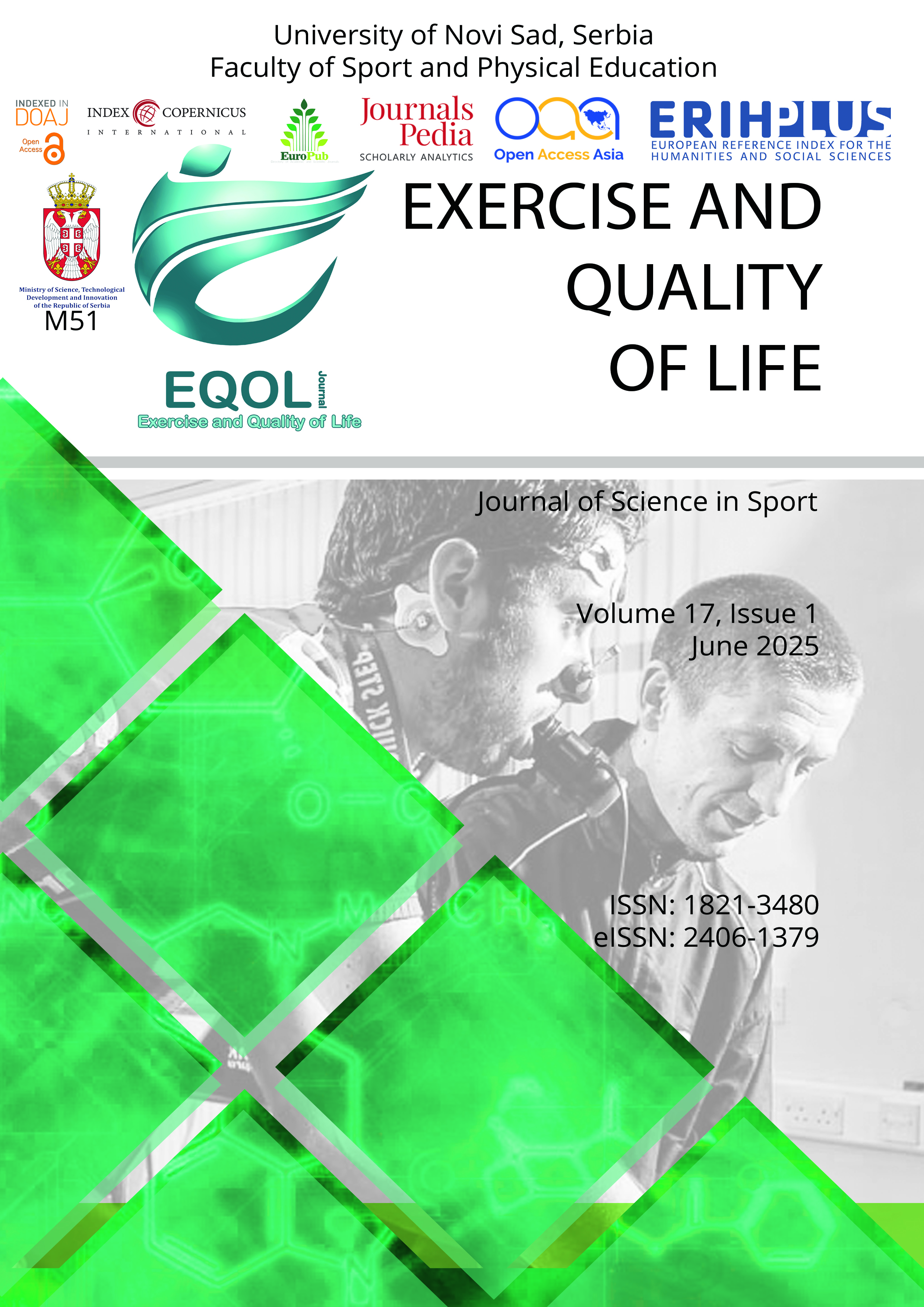Current issue

Volume 17, Issue 1, 2025
Online ISSN: 2406-1379
ISSN: 1821-3480
Volume 17 , Issue 1, (2025)
Published: 15.06.2025.
Open Access
All issues
Contents
13.12.2023.
Original scientific paper
Lower and upper quarter y-balance test in recreationally active healthy adults: test-retest reliability, gender differences and inter-limb asymmetries
Y-balance test for lower limbs (LQYBT) and upper limbs (UQYBT) are frequently used to assess dynamic single-leg balance. In this study, we aimed to examine the test-retest reliability of both tests, to compare scores on the dominant and nondominant sides and report on the magnitude of asymmetry, as well as assess any gender differences. A sample of 30 healthy, recreationally active individuals (15 men and 15 women; age, 22.83 ± 8.78 years; height, 175.46 ± 8.29 cm; body mass 72.08 kg ± 12.60 kg) completed the LQYBT und UQYBT measurements twice 12 to 14 days. Reliability was assessed using the intraclass correlation coefficient (ICC) (absolute agreement, two-way random), paired-samples t-test, and typical error (expressed as coefficient of variation, CV). Both tests showed moderate to good relative reliability (ICC = 0.62 – 0.85) and acceptable absolute reliability (CV = 3.54 – 7.20 %), with a possible learning effect for certain reach directions. Men tended to score better than women, but statistically significant differences were confirmed in only 3 of 12 comparisons. Differences between dominant and non-dominant sides were mostly very small and statistically significant in only 2 of 6 comparisons. Mean asymmetry scores were in the range of ~3-6%. These results contribute to the evidence on the utility of LQYBT and UQYBT testing in healthy adults.
Aleksandar Bubić, Žiga Kozinc























